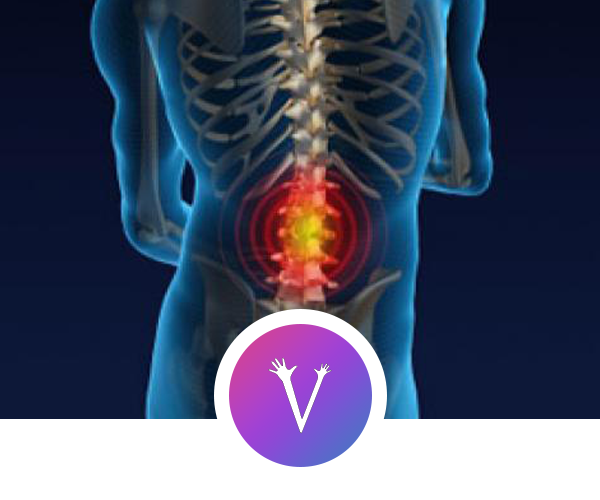Combat Lower Back Pain

Back pain is miserable and immensely common with 8 in 10 people suffering one or more bouts of lower back pain and the causes and treatments are numerous. In many cases, lifting something heavy without the proper technique causes muscle strain – which happened to me recently when I tried to pick up my heavy bags of equipment for class when twisting. Ice packs and pain relief did the trick and within a few days I was fortunate to be back on track.
So many of my class members suffer with lower back pain which impedes their mobility. Of course the worst thing you can do is sit down and rest yet when you’re in pain it is natural to stop moving. The advice used to be bed rest, but now that’s to be avoided (apart from maybe the first couple of days when it’s really acute). Today, the general advice for nonspecific lower back pain is to keep active and keep doing normal daily activities as much as possible. In most cases, the pain disappears within six weeks but may come back from time to time.
Phyllis, who is in her 80s and has been a regular Move it or Lose it class goer, recently twisted her back which developed into sciatica which she described as “worse than toothache.” After reluctant visits to the doctor who recommended pain killers and to keep moving, Phyl saw a physiotherapist who was thrilled that she was coming to a class especially one that included strengthening exercises. Use our postcode finder if you’re looking for a class near you: Find a Class
Like so many other musculoskeletal problems, keeping the muscles strong does help reduce the load on the joints and often offers a better solution than opiates which often have negative side effects. This is particularly concerning for older people as the last thing they need is medication which makes them feel sleepy or more likely to lose their balance.
It took several weeks but I’m glad to say that Phyl is now out of pain and feels like a “new woman!”
One of the many contributors to developing simple lower back pain is having tight hamstrings which also affects the walking gait. There are several ways to stretch hamstrings but in our classes we do a really effective seated hamstring stretch. This really appeals to the many people who avoid yoga and Pilates as that involves getting up and down from the floor.
Here’s how to do a seated hamstring stretch:
- Sit towards the front third of a sturdy chair, sit tall with feet hip-width apart and your chin ‘on a shelf’.
- Extend one leg out in front with the heel to the floor and toes pointing up towards the ceiling.
- Place your hands on the bent leg and lift your ribs up away from your hips, lengthening through your spine and engaging your core muscles.
- Lean forward slightly from the hip, supporting the upper body with the hands on the bent leg.
- You should feel the stretch through the back of the leg which can be intensified by drawing the toes up further towards the shin.
- Keep the heel resting on the floor, look forwards not up and remember to breathe normally.
- Hold for 10-20 seconds then release and repeat on the other side.
You can see this and more in our Move it or Lose it! DVDs watch our trailers to find which one suits you.
Remember to get advice from a medical professional if you have any health conditions or are unsure about doing any exercises.